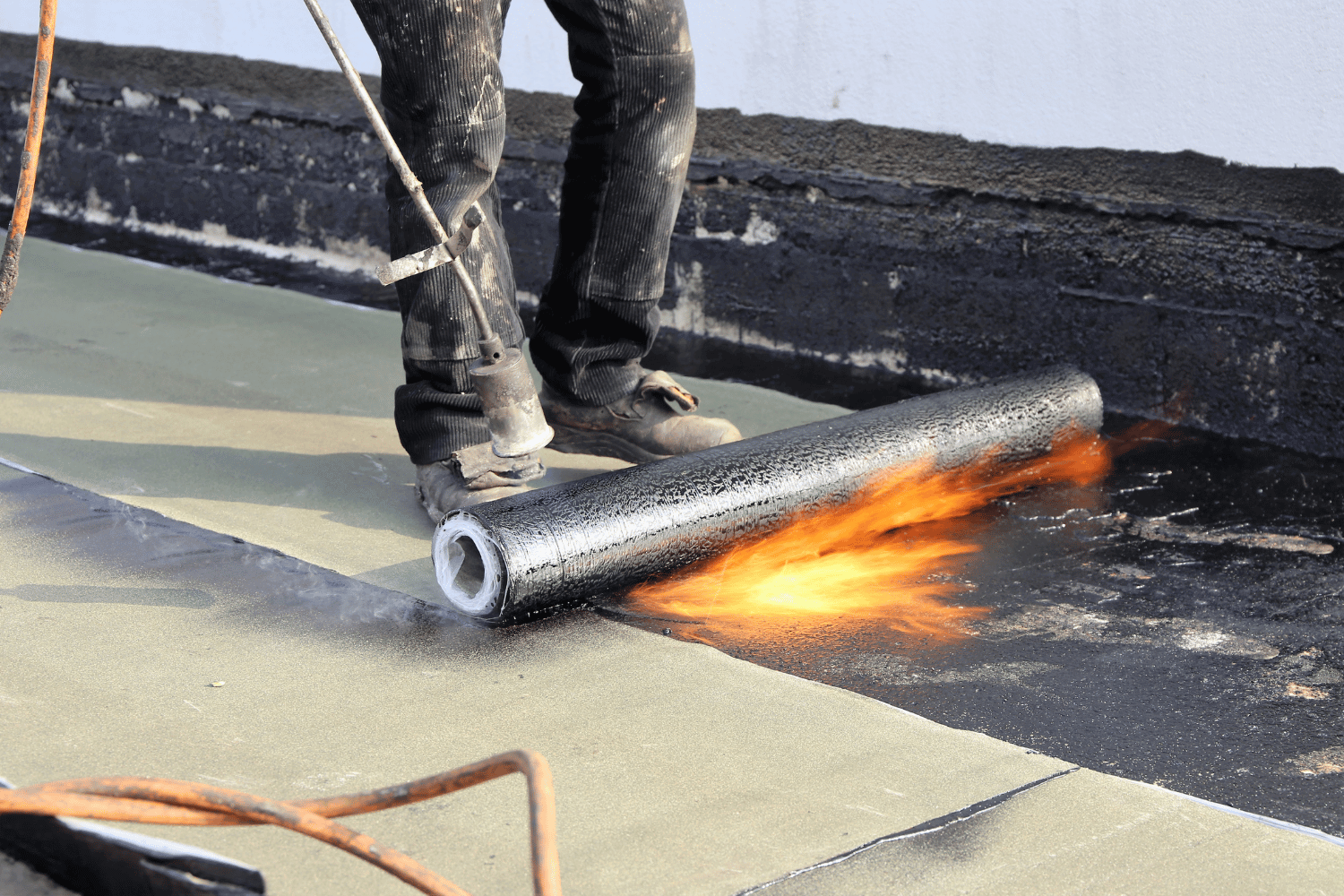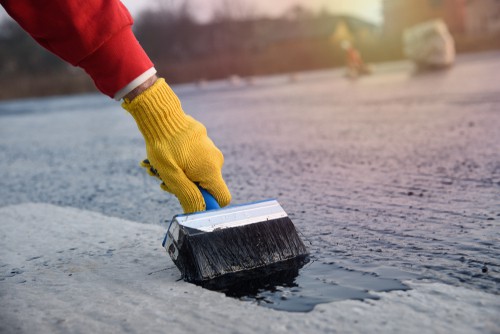Foundation waterproofing Omaha: The Long-Term Investment
How Waterproofing Works: A Comprehensive Check Out Techniques and Technologies
Waterproofing is vital for protecting frameworks from moisture-related damages. It entails different techniques and innovations that create obstacles against water invasion. Typical methods, such as compressed clay, exist together with modern advancements like liquid-applied membrane layers. Understanding the subtleties of these strategies is crucial for effective application. Nonetheless, the efficiency of any kind of waterproofing service pivots not only on the techniques utilized however also on continuous maintenance and evaluation. What are the essential factors that affect long-lasting efficiency?
Recognizing the Fundamentals of Waterproofing
Waterproofing is an essential procedure that shields structures from water breach, which can lead to significant damages with time. This method entails the application of numerous products and techniques made to develop an obstacle against wetness. The main goal is to avoid water from passing through surface areas, which can create deterioration, mold growth, and structural instability.Various elements affect the selection of waterproofing method, including the kind of structure, its location, and ecological conditions. Recognizing the physics of water motion and the properties of different products is essential in picking a reliable waterproofing solution.Effective waterproofing not only safeguards structures yet likewise improves their long life and honesty. Generally, it is integrated right into the style phase of building to guarantee complete protection. As recognition of water-related issues expands, the relevance of comprehending waterproofing basics ends up being increasingly clear to architects, home builders, and residential property proprietors alike.
Conventional Waterproofing Techniques
Standard waterproofing techniques have actually been utilized for centuries, depending on tried and true techniques and products to protect frameworks from water damages. One of the oldest methods involves making use of clay, which, when compressed, creates an all-natural barrier versus moisture. Additionally, asphalt, a sticky, black material acquired from petroleum, has been utilized for its water-resistant homes, commonly applied to roof coverings and foundations.Another method includes the application of lime-based plasters, which give a breathable layer that allows dampness to leave while stopping water ingress. Thatch roof covering, a traditional technique still seen in some societies, provides excellent waterproofing because of its securely loaded straw layers.Moreover, the use of stone and brick has actually projected, as these materials are naturally immune to water when effectively installed. Overall, traditional waterproofing approaches stress the value of choosing ideal products and building and construction practices to improve sturdiness versus water invasion.
Modern Waterproofing Technologies
Advancements in contemporary waterproofing technologies have changed the method frameworks are safeguarded from water damage. Innovative approaches such as liquid-applied membrane layers and advanced sealants have actually boosted the performance and convenience of waterproofing options. These technologies enable smooth application, reducing the danger of leaks and making certain extensive coverage over complex surfaces.Moreover, the assimilation of clever modern technologies, such as wetness sensing units and automated surveillance systems, enables real-time assessment of waterproofing performance. This aggressive technique promotes timely upkeep and minimizes long-lasting repair costs.Additionally, advancements in spray-applied coverings provide quick application and excellent adhesion, adapting to numerous substratums while offering robust protection. Methods like polymer-modified systems even more enhance flexibility and longevity, making them appropriate for diverse atmospheres. On the whole, modern-day waterproofing innovations not just alleviate water breach yet likewise add to the long life and sustainability of frameworks, marking a significant change in the sector.
Materials Made Use Of in Waterproofing
The performance of waterproofing solutions heavily counts on the materials utilized in their application. Numerous products are employed to create barriers against water ingress, each with distinct homes matched for various settings. Generally used products include membranes, finishings, and sealants.Liquid-applied membranes, frequently made from polyurethane or acrylic, form a seamless obstacle that adjusts to intricate surface areas. Sheet membranes, usually constructed from rubber or polycarbonate, offer durability and are ideal for bigger locations. Furthermore, cementitious waterproofing products, made up of cementitious compounds, provide excellent adhesion and flexibility.Sealants made from silicone or polyurethane are important for joints and joints, guaranteeing complete defense. Furthermore, sophisticated products, such as geo-composite membrane layers, incorporate several functions, improving performance. Overall, the option of waterproofing products is crucial in achieving long-lasting and reliable water resistance, customized to specific project demands and ecological problems.
Usual Applications of Waterproofing
Waterproofing plays an important duty in various markets, guaranteeing the long life and stability of structures. Common applications include household solutions that safeguard homes, commercial framework that safeguards organizations, and commercial setups that need durable protection versus wetness. Comprehending these applications highlights the value of waterproofing in keeping both safety wet basement solutions and security and capability across various atmospheres.
Residential Waterproofing Solutions
Many homeowners deal with obstacles with wetness invasion, making efficient property waterproofing solutions essential. Various techniques exist to resolve this issue, consisting of inside and outside waterproofing systems. Interior remedies commonly entail the application of sealers and finishings to basement walls, which help avoid water seepage. Exterior methods generally include the installation of water drainage systems and waterproof membranes that divert water far from the foundation.Additionally, property owners might consider sump pumps to eliminate water build-up and dehumidifiers to regulate humidity levels. Appropriate grading and making use of seamless gutters additionally play a vital function in handling water flow around the home. By executing these strategies, home owners can considerably minimize the danger of water damage and mold growth, making certain a dry and risk-free living atmosphere.

Industrial Facilities Protection
Effective waterproofing options play a vital function in the protection of business framework. Water Solutions. These strategies are crucial for securing buildings, car parking structures, and bridges from water damages, which can compromise structural honesty and cause costly fixings. Common applications include the installation of membrane layers, finishes, and sealers that create obstacles against moisture seepage. Locations such as basements, roofs, and outside wall surfaces are often prioritized to assure long life and durability. Additionally, waterproofing systems can improve power efficiency by avoiding water-related issues that might cause mold and mildew growth and deterioration. By applying durable waterproofing procedures, residential property proprietors can safeguard great post to read their investments and preserve operational performance, eventually contributing to the total sustainability of industrial facilities
Industrial Applications Introduction
While various industries deal with unique challenges, the demand for trusted waterproofing options remains a consistent in industrial applications. Industries such as manufacturing, building and construction, and energy commonly experience atmospheres where moisture direct exposure can jeopardize architectural stability and functional performance. In making facilities, waterproofing is crucial for safeguarding machinery and materials from water damage. In construction, it safeguards structures and cellars against groundwater infiltration. The power industry counts on waterproofing for the defense of tools in hydroelectric plants and offshore structures. Additionally, food processing industries utilize waterproofing to ensure hygiene and compliance with safety criteria. On the whole, effective waterproofing services are important for enhancing longevity, security, and productivity across numerous commercial setups.
Maintenance and Long Life of Waterproofing Solutions
Although waterproofing services are created to provide long-lasting protection against moisture intrusion, normal maintenance is vital to assure their efficiency and long life - Foundation waterproofing Omaha. Routine assessments play a substantial function in recognizing possible issues such as splits, peeling off, or indications of water damage. Attending to these problems quickly can avoid further wear and tear and costly repairs.Additionally, cleaning up the surface area of waterproofed locations aids get rid of dirt and debris that could jeopardize the honesty of the waterproofing barrier. It's also advisable to reapply safety finishes or sealants as suggested by suppliers to maintain suitable efficiency. Ecological factors, such as UV direct exposure and extreme weather problems, can affect the life expectancy of waterproofing products, making normal evaluation essential
Frequently Asked Inquiries
Can Waterproofing Be Applied in Winter?
The inquiry of using waterproofing in winter elevates issues about bond and treating. Numerous products may not perform at their ideal in reduced temperatures, necessitating mindful option and consideration of details guidelines for efficient application.
How Much Time Does Waterproofing Normally Last?
The duration of waterproofing efficiency varies based upon products and ecological aspects. Normally, it can last from 5 to 10 years, but routine maintenance official site and evaluations are necessary to guarantee peak efficiency and longevity.
Is DIY Waterproofing Effective and Safe?
The performance and safety and security of DIY waterproofing rely on different aspects, consisting of worldly quality and application technique. While some individuals achieve sufficient outcomes, others might run into issues that compromise long-lasting defense and structural integrity.
What Are the Indications of Failing Waterproofing?
Signs of falling short waterproofing include noticeable water spots, peeling paint, mold and mildew development, musty smells, and wetness in walls or ceilings - Basement waterproofing Omaha. These indications suggest jeopardized barriers, demanding punctual assessment and prospective removal to stop additional damage
Just how Do I Choose the Right Waterproofing Professional?
